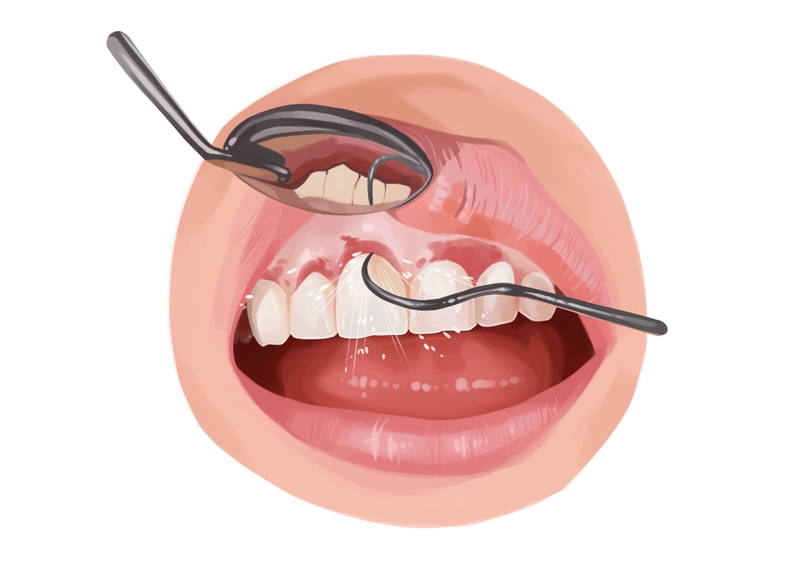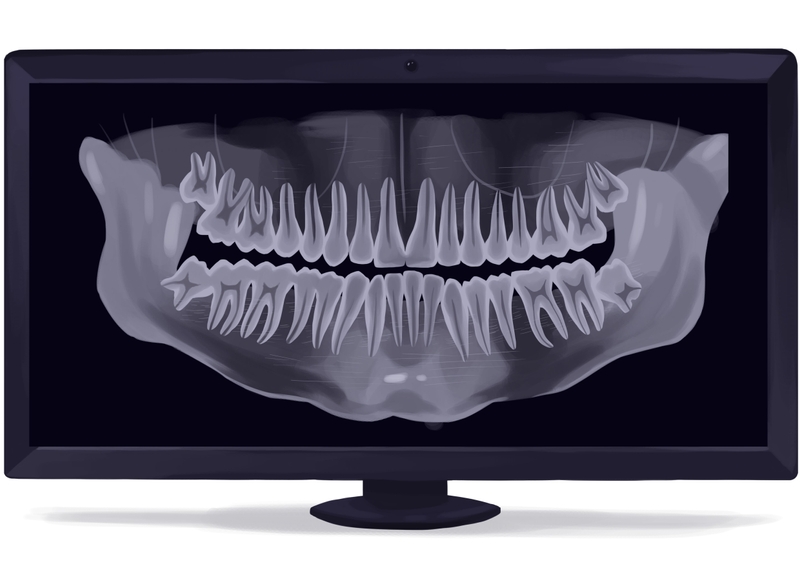- The average cost for scaling and root planing is $200-$300. You may need additional visits and procedures may be required, which can increase the cost.
- The cost of scaling and root planing depends on the type of treatment (preventive or therapeutic) and the number of quadrants/SRP.
- Procedures that may be required before or after scaling and root planing include dental exams, debridement, irrigation, antimicrobial agents, periodontal care, and radiographs.
Looking for savings? Use Authority Dental to book a low-cost dentist near you and save on all dental procedures, including SRP.
What is the cost of SRP with and without insurance? Here's everything you need to know.
Average cost of scaling and root planing

Picture by Authority Dental under CC 2.0 license
Scaling and root planing is more commonly known as a deep dental cleaning.
There are two types: preventive (a form of dental care) and therapeutic. The biggest factor determining the cost for this treatment is whether you have the former or latter.
| SCALING AND ROOT PLANING TYPE | AVERAGE COST | COST RANGE |
|---|---|---|
| Preventive, 1 to 3 teeth per quadrant | $200 | $150-$300 |
| Preventive, 4 or more teeth per quadrant | $300 | $200-$450 |
| Therapeutic, full mouth | $200 | $100-$350 |
Preventive scaling and root planing (SRP) is charged per quadrant of the mouth, while therapeutic SRP is charged per the entire mouth, so the cost of scaling depends on the number of quadrants/SRP.
The price is also dependent on whether a periodontist or a general dentist is performing the procedure.
After your initial visit to the dental clinic, the treatment duration is usually not long, but your dentist might ask you to schedule a second visit, and sometimes additional procedures may be needed based on your treatment plan.
Associated costs

Picture by Authority Dental under CC 2.0 license
A number of procedures might be required before or after your scaling and root planing.
| PROCEDURE TYPE | AVERAGE COST | COST RANGE |
|---|---|---|
| Dental exam | $100 | $50-$250 |
| Full-mouth debridement | $200 | $150-$300 |
| Gingival irrigation | $40 | $10-$150 |
| Antimicrobial agent | $90 | $400-$170 |
| Periodontal maintenance | $150 | $100-$300 |
| Bitewing X-ray | $35 | $25-$50 |
| Periapical X-ray | $35 | $25-$50 |
| FMX | $150 | $100-$300 |
| Panoramic X-ray | $130 | $100-$250 |
Your dentist will make the final decision on what is necessary.
Dental exam
The dentist will want to assess whether you are a good candidate for scaling and root planing. A dental exam is a great opportunity to do so.
He or she will review your medical and dental history and perform an exam. The exam will include a periodontal probing. You will also be informed of any existing dental conditions such as cavities or underlying infections.
A dentist might suggest any procedures you might need to maintain your oral health. All costs of X-rays or other treatments should be quoted at this time as well.
The price range is quite big. This is because regular patients usually pay a bit less ($50 on average). New patients or patients who haven’t been to the office for a long time will have to pay about $150.
It might turn out at this stage that you will need full-mouth debridement before scaling and root planing.
Full-mouth debridement
This procedure is performed on those who have poor oral hygiene and have not been to the dentist for a long time. This sets it apart from regular teeth cleaning, with which it is sometimes confused.
Debridement is recommended for extreme cases where the gums are highly inflamed or swollen. It is also common when there is so much plaque that it is difficult to judge what actually needs to be done in the mouth.
After a full-mouth debridement is performed you must wait four to six weeks for your next appointment. The hygienist will give you instructions on how to care for your mouth.
Gingival irrigation
This treatment uses water to minimize the amount of bacteria between the teeth and the gums, as well as between the teeth themselves.
What’s more, if you are suffering from halitosis (bad breath) despite brushing regularly, this treatment might flush away the food particles which your toothbrush can’t reach.
The stream of water will also contain antimicrobials. These will kill bacteria left behind after scaling and root planing in hard-to-reach places.
There are irrigators that you can buy and use at home, but they will not be as effective. Moreover, your dentist will be able to see into your mouth better than you can yourself.
The cost provided above concerns one quadrant of the mouth.
Localized delivery of an antimicrobial agent
If tartar has made its way below the gumline it acts as an irritant for the gums. These will become swollen and inflamed, making pockets that are hard to reach. This is called periodontitis.
After clearing the pockets of plaque and tartar buildup an antibiotic is inserted. It will activate in a matter of hours and work for a few days. It will systematically fight off bacteria between the gums and teeth.
Your dentist will instruct you on how to care for your teeth at this time.
The cost range provided above concerns one tooth.
Periodontal maintenance
Periodontal maintenance is a treatment designed to target causes of irritation and inflammation. If your periodontal disease has resulted in:
bone loss,
gum “pockets” deeper than 4 millimeters,
bleeding gums, or
exposed root surfaces
you are probably not a good candidate for regular teeth cleaning. Periodontal maintenance is an alternative that is gentler on areas affected by periodontitis. It might also be appropriate if you have had periodontal surgery.
This treatment is done after scaling and root planing or other periodontal procedures to help maintain the status of gums and bone after initial healing.
It is recommended three to four times a year if needed. It is considered a basic service by insurance carriers, but it is always a good idea to check.
Dental X-rays
To determine whether you are a good candidate for scaling and root planing you might have to cover the cost of dental X-rays. They can detect decay happening on the inside of your tooth, tartar in between the teeth and below the gumline, as well as the state of the roots and the condition of the crown.
Some X-rays you can expect to have before an SRP appointment are:
a bitewing,
a periapical or a panoramic X-ray, or
an FMX.
Does insurance cover scaling and root planing?

Picture by Authority Dental under CC 2.0 license
Insurance policies may cover about 50% of the costs of SRP. Regular scaling and root planing is usually refundable once every two years. In the case of the presence of inflammation, two procedures a year are anticipated.
This may be subject to change under particular circumstances, but you will have to check your policy. Some providers might refuse to cover SRP unless an X-ray, usually an FMX, is performed. They might even require a probing chart, conducted during a periodontal probing procedure.

Another thing you must remember about is that each procedure is limited to a number of teeth. In combination with yearly maximums, it might be problematic to have the whole mouth treated. One strategy is to have two quadrants done in December and two in January.
The solution we recommend is signing up for a dental plan. This involves a monthly or yearly fee, but it guarantees a lower price on all procedures in exchange. Reductions range from 10%-60%.
A discount plan can be used with insurance after you reach your limit or independently of it. There are no annual limits or paperwork to fill out. Waiting periods are not a problem either. You can start using the plan the day you sign up.
FAQ
What affects SRP cost the most?
How is the price of preventive and therapeutic SRP different?
Preventive SRP is actually less cost-efficient than the therapeutic kind, but this treatment might be all that is required. Your dentist will determine whether it is enough.
The preventive procedure is charged by quadrants, while the one performed on patients with active gum disease is charged per the whole mouth. Either way, you will spend about $200-$300 on SRP.
Matthew Stewart, DDS
Generally SRP is done on one or two quadrants at a time. Most insurances and therefore most dentists do not do more than two per visit.